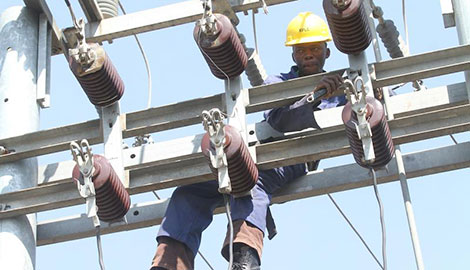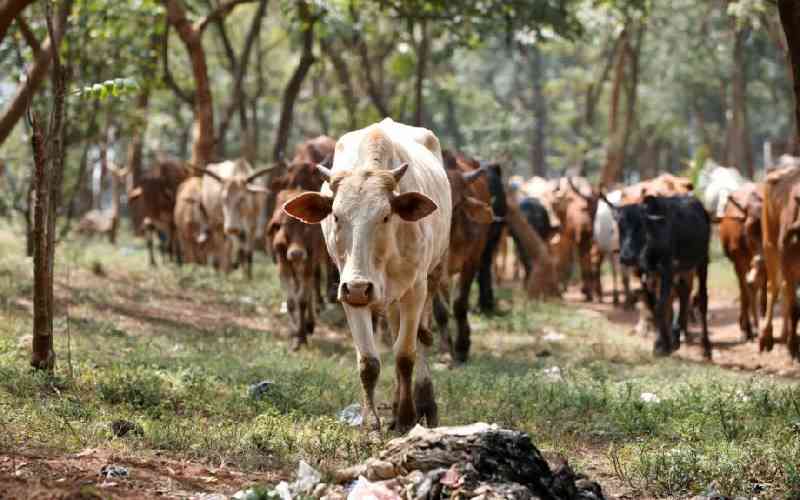 |
|
An employee of Kenya Power fixes supply lines in Homa Bay town at the weekend 02/08/14 during the upgrading power supply systems. PHOTO: TITUS MUNALA/STANDARD |
Kenya: The Government has plans to introduce what it calls a time-of-use tariff that it hopes will cut the cost of power to manufacturers.
This will lower the cost of production to the manufacturers who will in turn be expected to pass on the benefits to consumers through reduced prices of goods.
Energy and Petroleum Cabinet Secretary (CS) Davis Chirchir, said the tariff will seek to sell power cheaply to manufacturers during off-peak hours when there is idle power.
Power consumption patterns show most of the power in Kenya is used during the day and at night up to 10pm when most people retire to bed. Under the planned new tariff, manufacturers are likely to enjoy discounts of up to 40 per cent during the off-peak hours. “This will be announced shortly,” said Chirchir on the sidelines of a press conference on Thursday.
He added that President Uhuru may announce the new measures on Jamhuri Day in an ambitious programme through which the Jubilee administration seeks to ease the burden of Kenyans, and hopefully reduce the bashing from the opposition that has demanded for a referendum to, among others, address the high cost of living. It is expected that the plan will take off from January. According to the CS, the plan will work in such a way that manufacturers will be approached with a power purchase plan and then asked to reduce the costs of their products by a certain percentage.
The plan will also see increased lighting in the city with Chirchir explaining that areas covered under the lighting programme for cities could go up by up to three times. The Government further plans to cut the cost of power to the Export Processing Zones (EPZs). Already, a 50 per cent reduction has been effected from the month of June this year.
But Kenya is still required to do more on this front if her goods are to compare favourably with goods from neighbouring countries such as Uganda and Ethiopia. For instance, when Kenya reduced power tariffs to the textile industry from 80 US cents to 9 US cents, Uganda reduced the same tariff to 4 US cents.
To further cut the cost of production for EPZs, there are plans to start putting up factories near power generating plants.
For instance in Naivasha, land has already been identified to put up an apparel factory. Other plans are being muted to build factories near geothermal plants to utilize the steam from these wells to power the factories.
 The Standard Group Plc is a
multi-media organization with investments in media platforms spanning newspaper
print operations, television, radio broadcasting, digital and online services. The
Standard Group is recognized as a leading multi-media house in Kenya with a key
influence in matters of national and international interest.
The Standard Group Plc is a
multi-media organization with investments in media platforms spanning newspaper
print operations, television, radio broadcasting, digital and online services. The
Standard Group is recognized as a leading multi-media house in Kenya with a key
influence in matters of national and international interest.
 The Standard Group Plc is a
multi-media organization with investments in media platforms spanning newspaper
print operations, television, radio broadcasting, digital and online services. The
Standard Group is recognized as a leading multi-media house in Kenya with a key
influence in matters of national and international interest.
The Standard Group Plc is a
multi-media organization with investments in media platforms spanning newspaper
print operations, television, radio broadcasting, digital and online services. The
Standard Group is recognized as a leading multi-media house in Kenya with a key
influence in matters of national and international interest.









